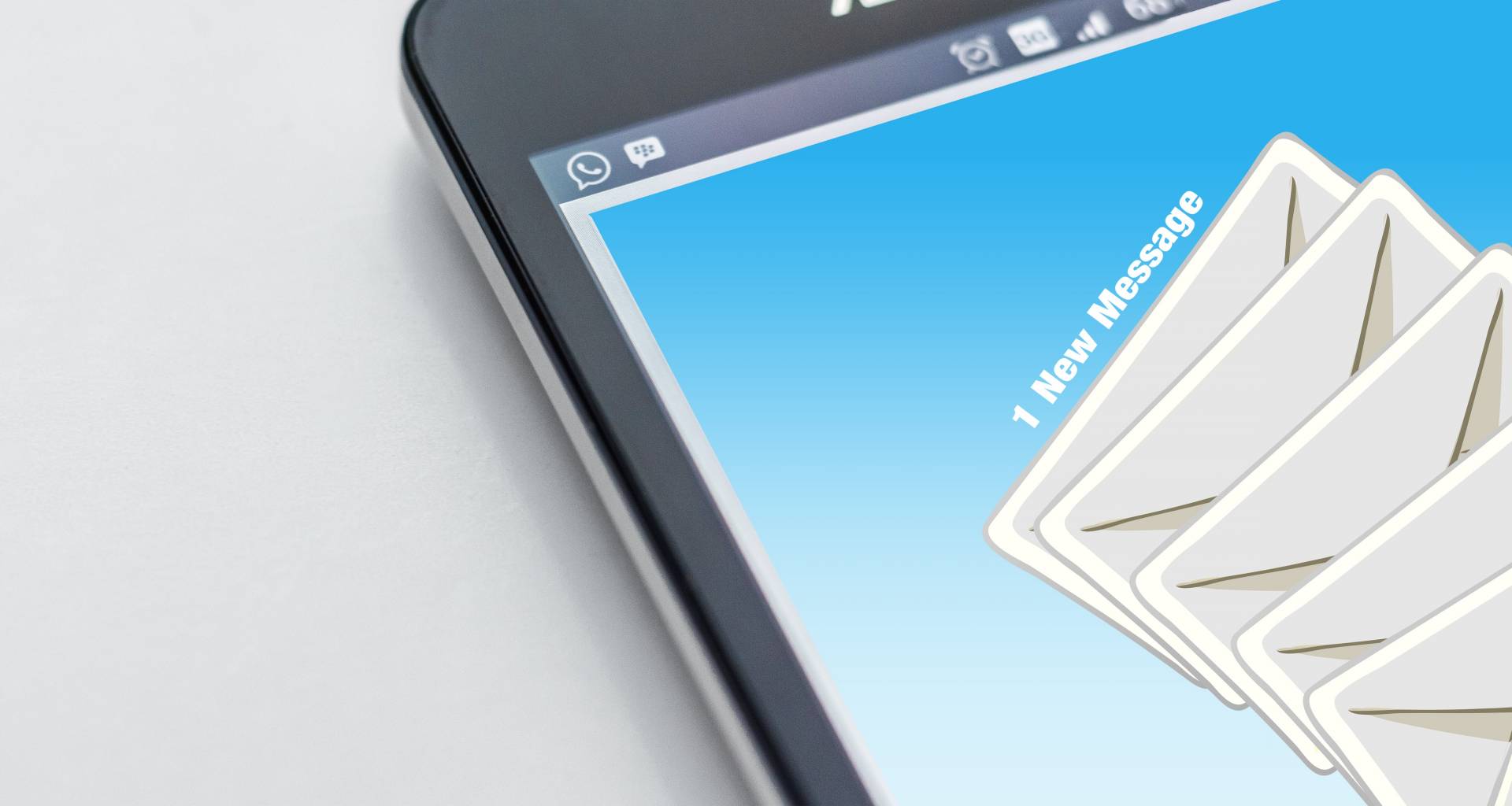Personalization is an important aspect in business today but can be time-consuming. What’s one easy, low-cost way for a small business to personalize the overall customer experience?
These answers are provided by Young Entrepreneur Council (YEC), an invite-only organization comprised of the world’s most promising young entrepreneurs. YEChas also launched BusinessCollective, a free virtual mentorship program that helps millions of entrepreneurs start and grow businesses.
1. Send Personalized Gifts to Customers
 We send personalized gifts that aren’t that expensive, but customers love them. An example would be sending a customized handwritten note. I suggest something like maillift.com. They have an API so you can do everything programmatically. – Liam Martin, TimeDoctor.com
We send personalized gifts that aren’t that expensive, but customers love them. An example would be sending a customized handwritten note. I suggest something like maillift.com. They have an API so you can do everything programmatically. – Liam Martin, TimeDoctor.com
2. Let Artificial Intelligence Handle Your Grunt Work
 If you take time to develop a robust AI system to interact with clients at the prospecting stage and upkeep stage of your relationship, then you should be able to invest more of your time to really give personalized attention when it’s needed most. – Artem Maskov, DEVTRIBE INC
If you take time to develop a robust AI system to interact with clients at the prospecting stage and upkeep stage of your relationship, then you should be able to invest more of your time to really give personalized attention when it’s needed most. – Artem Maskov, DEVTRIBE INC
3. Survey Your Customers to Help Address Their Needs Better
 I use quizzes to automate the personalization of our customer experience. Based on the responses to the quiz, we are able to send subscribers emails that specifically answer the issues they are experiencing. This makes it much easier to sell to them, build their trust and help them. – Bryan Kesler, CPA Exam Guide
I use quizzes to automate the personalization of our customer experience. Based on the responses to the quiz, we are able to send subscribers emails that specifically answer the issues they are experiencing. This makes it much easier to sell to them, build their trust and help them. – Bryan Kesler, CPA Exam Guide
4. Commit to Personal Check-Ins
 The most effective tactics are sometimes the most traditional. Although our accounts team is phenomenal, I still regularly dedicate time to personally connect with clients as much as possible. This opportunity to converse frankly with the top level of leadership, even if brief or intermittent, is clear evidence of our commitment to serving our clients well. – Ryan Wilson, FiveFifty
The most effective tactics are sometimes the most traditional. Although our accounts team is phenomenal, I still regularly dedicate time to personally connect with clients as much as possible. This opportunity to converse frankly with the top level of leadership, even if brief or intermittent, is clear evidence of our commitment to serving our clients well. – Ryan Wilson, FiveFifty
5. Follow Up After the Purchase
 Every customer has a unique assortment of products in their shopping cart when they complete checkout. Use that information to customize their post-purchase emails. Send educational product information to help them maximize the utility of their purchase, and help them discover new use cases for the product. – Firas Kittaneh, Amerisleep
Every customer has a unique assortment of products in their shopping cart when they complete checkout. Use that information to customize their post-purchase emails. Send educational product information to help them maximize the utility of their purchase, and help them discover new use cases for the product. – Firas Kittaneh, Amerisleep
6. Make Thoughtful, Genuine Gestures That Put Your Product in Context
 When people rent cellphone charging stations from us for events, we add hand wipes in case their hands get dirty during assembly. We also line the cases with dryer sheets so when they open the box they get a sense of calm in what is typically a hectic environment. In the past, we have included things like mints, energy candies and other little items that could be useful for surviving an event. – Jessica Gonzalez, InCharged
When people rent cellphone charging stations from us for events, we add hand wipes in case their hands get dirty during assembly. We also line the cases with dryer sheets so when they open the box they get a sense of calm in what is typically a hectic environment. In the past, we have included things like mints, energy candies and other little items that could be useful for surviving an event. – Jessica Gonzalez, InCharged
7. Make Your System-Generated Emails Feel Personal
 I am always amazed at how our customers will respond to a system-generated email, thinking that it was actually typed up by a human being. We find great success with our emails because we make them very personal. We avoid sending messages from a standardized email account but instead generate them as if they were coming from a team member. Emails coming from someone is the ultimate personalization. – Diego Orjuela, Cables & Sensors
I am always amazed at how our customers will respond to a system-generated email, thinking that it was actually typed up by a human being. We find great success with our emails because we make them very personal. We avoid sending messages from a standardized email account but instead generate them as if they were coming from a team member. Emails coming from someone is the ultimate personalization. – Diego Orjuela, Cables & Sensors
8. Segment Your Email Lists
 Email marketing is most effective when you send targeted emails to your website visitors. You can segment lists based on previous behavior and create buyer personas for your visitors depending on their interaction with your site. This will make it easier for you to understand what your visitors are looking for and deliver emails that are more likely to convert. – Syed Balkhi, OptinMonster
Email marketing is most effective when you send targeted emails to your website visitors. You can segment lists based on previous behavior and create buyer personas for your visitors depending on their interaction with your site. This will make it easier for you to understand what your visitors are looking for and deliver emails that are more likely to convert. – Syed Balkhi, OptinMonster
9. Serve Automated Recommendations
 Lead people with recommendations that are related to their purchase. Amazon utilizes this very well to boost its e-commerce sales. Recommendations could be based on similar products or what people searched for after they landed on that given landing page. This strategy could also be followed up in a personal email or invoice sent to the customer after a purchase or abandoning a purchase. – Kristopher Jones, LSEO.com
Lead people with recommendations that are related to their purchase. Amazon utilizes this very well to boost its e-commerce sales. Recommendations could be based on similar products or what people searched for after they landed on that given landing page. This strategy could also be followed up in a personal email or invoice sent to the customer after a purchase or abandoning a purchase. – Kristopher Jones, LSEO.com
10. Use the Data You Have
 Use the valuable data you already have to learn from your business, consumers and competition. Data can help you learn what’s most effective for your business and how to utilize these insights to effectively customize the customer experience. Your insights provide you a picture of your consumer’s needs and expectations so you can update the areas that need an improved, relevant experience. – Solomon Thimothy, OneIMS
Use the valuable data you already have to learn from your business, consumers and competition. Data can help you learn what’s most effective for your business and how to utilize these insights to effectively customize the customer experience. Your insights provide you a picture of your consumer’s needs and expectations so you can update the areas that need an improved, relevant experience. – Solomon Thimothy, OneIMS
11. Offer Personalized Deals Through a Loyalty Rewards Program
 For digital commerce business that already have a loyalty rewards program, offer your customers a deal that your company has never offered before. Create 48-hour flash sales with incredible deals. Businesses that don’t have a rewards program need to implement one as soon as possible. At the very least, you’ll be able to grow your mailing list. – Patrick Barnhill, Specialist ID, Inc.
For digital commerce business that already have a loyalty rewards program, offer your customers a deal that your company has never offered before. Create 48-hour flash sales with incredible deals. Businesses that don’t have a rewards program need to implement one as soon as possible. At the very least, you’ll be able to grow your mailing list. – Patrick Barnhill, Specialist ID, Inc.
12. Send Relevant, Timely Content Via Email
 As long as you’re writing content and keeping a pulse on what is out there in your industry, you can create an email marketing campaign that is pretty cost-effective. Make sure you have a way to capture email addresses of site users and then put them into a drip campaign based on where they are in the buyer’s journey. This will help keep the experience personalized. – John Hall, Influence & Co.
As long as you’re writing content and keeping a pulse on what is out there in your industry, you can create an email marketing campaign that is pretty cost-effective. Make sure you have a way to capture email addresses of site users and then put them into a drip campaign based on where they are in the buyer’s journey. This will help keep the experience personalized. – John Hall, Influence & Co.
13. Emphasize Customer Service
 The importance of great customer service is sometimes not given adequate appreciation, although this can be a great channel through which to connect with users. Acknowledging that you understand their concerns and can find a creative solution to their problem, in addition to addressing them by name, can have ripple effects that improve someone’s overall experience and spread to other users. – Mark Krassner, Expectful
The importance of great customer service is sometimes not given adequate appreciation, although this can be a great channel through which to connect with users. Acknowledging that you understand their concerns and can find a creative solution to their problem, in addition to addressing them by name, can have ripple effects that improve someone’s overall experience and spread to other users. – Mark Krassner, Expectful
14. Incorporate Automation Into Your CRM System
 Many automated programs are not expensive and do wonders in terms of personalization, especially when it comes through your CRM system. This can give you the ability to send out targeted messages that relate to a special time of year for the recipient, or that generate a personalized discount or promotion. – John Rampton, Calendar
Many automated programs are not expensive and do wonders in terms of personalization, especially when it comes through your CRM system. This can give you the ability to send out targeted messages that relate to a special time of year for the recipient, or that generate a personalized discount or promotion. – John Rampton, Calendar

